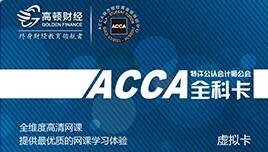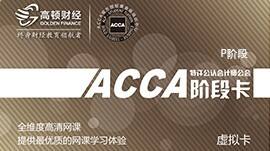2010年6月ACCA:P1考官总结
ACCA是财会界权威的国际会计师组织,在全球160多个国家拥有30万会员,取得ACCA资质证书可以获得英国名校硕士学位、移民资格以及国际财会界的通行证,**年薪已逾百万元,为众多的跨国公司和国际四大会计师事务所所推崇。
General Comments
The June 2010 P1 paper was similar in ‘feel’ and level to all previous P1 papers and I am pleased,as with the previous diets,to report that many people passed the paper with some achieving exceptionally high marks. I am always gratified and pleased to see the hard work of students and tutors rewarded with pass marks and I congratulate all successful candidates.
Before discussing the questions in detail,I have two overall remarks to make. Firstly,I sadly must repeat comments made in previous examiner‘s reports about the four professional marks in Q1. Many candidates did not gain many professional marks in writing the statement required in Q1(d)。Secondly,the ethical reasoning questions,Q2c and Q4c,were both done poorly overall. This suggests that candidates are less well prepared for these tasks than they might be. I will return to both of these points in my review of questions.
The format was the same as on previous P1 diets. In section A,question 1 was compulsory,worth a total of 50 marks and this was based on a longer case study. Candidates were then required to select two from the remaining three questions contained in section B of the paper. Each section B question was based on a shorter case and worth a total of 25 marks.
Specific Comments
Question One
This The section A case,underpinning the whole of question 1,was on a range of issues concerning a large nuclear complex on the coast of Ayland. The issues raised in the case were similar to those present in many such situations in a number of European countries and elsewhere where nuclear facilities are present. As in previous diets,question 1 covered a number of sections of the P1 study guide including content from the professional values and ethics section (section E)。
Part (a) was about stakeholders. It contained three distinct tasks:to distinguish between voluntary and involuntary stakeholders,to identify the voluntary and involuntary stakeholders in Hesket Nuclear and finally to assess the claims of three of the involuntary stakeholders previously identified. The first task (distinguish) was done quite well in the majority of cases but after that, candidates often became confused over which stakeholders were in which ‘camp’。The most prominent involuntary stakeholders were the governments of Beeland,Ceeland and the rare seals near the HN facility. A common mistake was to nominate the anti-nuclear group NNN as an involuntary stakeholder when it is obviously voluntary:it chose to engage with HN of its own free will.
Part (b)covered the roles of a trade union in corporate governance for the first time on a P1 paper. The question contained two tasks:to explain the roles and then to evaluate the contribution of FT,the trade union in the case,to the governance of HPC. This was one of the better questions in terms of candidate answers but the highest marks went to those able to show how FT had helped and challenged HPC using the evidence from the case. It was important to recognise that the union had been helpful to HPC in some respects but unhelpful in others.
Part (c)examined agency but introduced the important idea that agency relationships need not just be between directors and shareholders. In the case of HPC,the agency relationship was between the board of HPC and the government of Ayland. This meant that HPC had objectives other than profit maximisation because of the political objectives of its principal,the government. Most successful candidates achieved a pass mark on this part although others failed to see the difference between a government being the principal rather then shareholders.
Part (d) was the ‘professional marks’component of question 1. It contained two tasks: the first about the importance of accurate risk assessment and the second about HN‘s social and environmental footprint. Common errors in (d)(i)were to explain what risk assessment is rather than its importance or to fail to link the answer strongly enough with the case. Those achieving the highest marks were able to show,as the model answer shows, the links with the NNN assessment and the effects that this flawed assessment might have. In particular,this task was asking about the importance of accurate (as opposed to inaccurate and spurious)risk assessment.
Part (d)(ii)contained two tasks. Many candidates were able to explain ‘social and environmental footprint’ but fewer were able to do well on the second task which was a level 3 intellectual outcome:to construct a case. In this task,candidates were required to construct the argument in favour of the proposition that HN‘s social and environmental footprint is positive (i.e. to argue that it made a favourable social and environmental contribution)。 In order to be able to do this,candidates needed to know what such a footprint was and what it involved,and then to study the case for evidence to support the argument. The case study contained evidence on both the social footprint (about local jobs,energy and development abroad)and the environmental footprint (clean energy and very good safety/leakage record)。
Despite my highlighting a poor ‘professional marks’ performance in previous examiner‘s reports,many candidates failed to approach the answer as required in order to gain all of these marks. In this case,the required format for the answer was a response statement for a website. This means it was NOT a letter or a report.

相关阅读
2012年12月ACCA考试P4考试考官报告2013/06/19
2012年12月ACCA考试P3考试考官报告2013/06/19
2012年12月ACCA考试P2考试考官报告2013/06/19

















